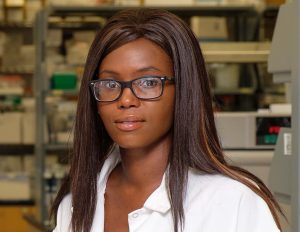Made possible by NIH/NHGRI R13HG010286 and the CWRU Cleveland Institute for Computational Biology
 Abu-Niaaj, Lubna, PhD
Abu-Niaaj, Lubna, PhD
Assistant Professor
Agricultural and Life Sciences
Central State University
Wilberforce, OH
Our current research interests are mainly to investigate the mechanisms of tissue regeneration, and to identify natural products of plant origin that have the potential to be used in pharmaceutical and health-related applications.
1) Tissue Regeneration: Our interest is to identify mechanisms that play roles in successful tissue regeneration. The focus is on studying genes induced in response to inflammation in response to wounds to determine their roles in the mechanism of tissue regeneration. Our future goal is to identify biomaterials and bioactive compounds to stimulate the mechanism of successful wound healing and tissue regeneration.
2) Plants are rich in bioactive compounds that have a wide-range of biological activities. Our studies focus on evaluation of the physiological activity as well as the antimicrobial activities of plants’ extracts and the compounds identified from them. The two paths we investigate: a) Physiological Studies: Our focus on plants that are used in traditional medicine to treat certain disorders in human. The main goals are to determine the effects on the contractility of smooth muscles and the heart. Our data showed a variation of effects on different types of muscles which highlights the importance of the thorough investigation of such plants specially those used as herbs. b) Microbiological Studies: Our studies use plants and fruits’ peel to evaluate their antimicrobials activity of plants on selected microbes, bacteria and fungi, causing food spoilage and/or wound healing. This will allow the use of such natural antimicrobials instead of chemicals in formulations relevant to food preservation and wound healing.
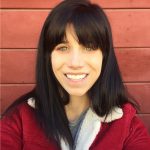 Barta, Richelle
Barta, Richelle
California Institute of Regenerative Medicine Intern
Institute for Genomic Medicine
University of California San Diego
San Diego, CA
Through the Institute of Regenerative Medicine (CIRM) I have started interning at Dr. Kelly Frazer's lab at UCSD, working both in their Genomics Core, as well as in their Cell Culture lab. In our cell culture lab, we are working with IPSCs and in our genomics core I've begun training for QC and sequencing. Through this incredible opportunity, I am hoping to expand my knowledge and discover where my passions lie. I'm fascinated by the concept of using science in order to aid in personalized medicine and am excited to learn all I can this coming year.
Benson, Maggie
Undergraduate
Neuroscience Institute
Georgia State University
Atlanta, GA
In humans, the topical application of menthol typically elicits a pleasant cooling sensation. Insects like Drosophila melanogaster, however, find menthol aversive. In chordates, the primary molecular sensors of menthol are the transient receptor potential (TRP) channels TRPA1 and TRPM8. TRP channels are highly conserved, incredibly ancient, and are important in sensing both noxious and innocuous stimuli – importantly, they are key to systems underlying nociception and pain. TRPA1 and TRPM8 play ancient roles in thermosensation and noxious chemical detection, but it is unknown if TRP-mediated menthol sensing is equally ancient and/or present in insects. In order to further our understanding of insect menthol sensing and TRP evolution, we tested the hypothesis that Drosophila melanogaster senses and responds to menthol in a TRP-dependent manner.
The field of precision medicine is all about learning and applying the new knowledge found in each other's research to basic biology, behavior, and clinical practice that will impact human health. My current work in the Drosophila melanogaster is adding to the conversation of neurogenomics which will help us understand how stimulants, like cold, is sensed by humans. By the mechanisms of thermosensation and noxious chemical detection being ancient, this will not only have an effect in the natural sciences of genetics, but as well as the clinical field.
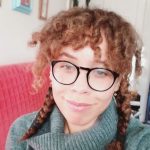 Delle Torri, Olivia
Delle Torri, Olivia
Undergraduate student
California Institute of Regenerative Medicine Intern
California State University San Marcos
San Marcos, CA
As an undergraduate student I am in the process of building my research. In the California Institute of Regenerative Medicine internship program, I'm beginning to work under Dr. Robert Hevner at the Sanford Consortium. His research focuses on Alzheimer’s disease and more specifically the involvement of the entorhinal cortex layer II, this layer is studied as the first to degenerate in the onset of Alzheimer’s. Through my year internship I plan to learn experimental planning and development of specific cortical neurons through disease modeling. The focus will involve 3 stages: characterizing the molecular profile, using the profile as a point of definition to differentiation, and testing exposure of induced pluripotent stem cells for ability to generate entorhinal cortex layer II neurons. Future applications are intended to be tested in mouse models and eventually in human for Alzheimer’s therapy.
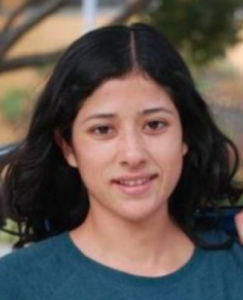 De Luna, Naycari
De Luna, Naycari
California Institute of Regenerative Medicine Intern
California State University San Marcos
Sanford Consortium
Vista, CA
I have recently started my internship through CIRM (California Institute for Regenerative Medicine) at Sanford Consortium in La Jolla, CA. The purpose of my internship is to gain knowledge and experience in working with stem cells so that we can become a part of the next generation of researchers contributing to the development and advancement of stem cell therapies for various diseases. I would ultimately like to take the skills I learn from my internship and take part in CAR T-cell therapy research to help advance a new cancer treatment options to patients.
 Ensberg, Erik
Ensberg, Erik
Undergraduate student
California Institute of Regenerative Medicine Intern
California State University San Marcos
Biotechnology
Carlsbad, CA
I am currently doing a year long internship through CIRM Bridges Stem cell internship. In this internship, I am working full time at Sanford Burnham Presby under Dr. Duc Dong. My project is to research the regenerative capabilities zebra fish. I am currently learning how to genotype these fish, but I expect to learn much more through this internship. Ever since my high school biotech class I've been interested in human genome and its potential. In my internship I will also be learning how to sequence the zebra fish DNA; which is the first step of precision medicine. With better understanding of the genes that make up the human genome we can create more specific medicine to each person; creating better treatment plans for all people.
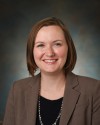 Fernández-Rhodes, Lindsay, PhD
Fernández-Rhodes, Lindsay, PhD
Assistant Professor
Biobehavioral Health
The Pennsylvania State University
University Park, PA
My current interdisciplinary research seeks to 1) elucidate the complex etiology of chronic diseases, and 2) identify key drivers of health disparities in the United States, both across the life course and across generations. As supported by my past training Genetic (PhD, 2016) and Social Epidemiology (Postdoc 2016-2018), I integrate both epi/genetic and psychosocial exposures into studies of reproductive and cardiovascular traits in under-studied or marginalized populations. I have had to use a variety of traditional and family-based methods to describe the intergenerational patterning of bio-social factors in US Hispanic/Latinos. Currently, I am an Assistant Professor in Biobehavioral Health at Penn State working to establish an independent research program that integrates clinical and public health perspectives into studies of gene-environmental interactions in cardiometabolic traits and the biologic embedding of adverse maternal experiences and risk factors on birth outcomes and childhood obesity.
 Laughing, Amber
Laughing, Amber
Undergraduate student
Molecular and Cellular Biology
The University of Arizona
Flagstaff, AZ
I am currently working on a joint program with the Navajo Health Education Program to adapt a sexual health education text message intervention program for the 35,000 Navajo youth living on the Navajo Nation in addition to the 11,000 Navajo youth living off the reservation. My research is currently assessing the effectiveness of the program and determining methods to tailor the program to meet the needs and interests of the target population. I have previously conducted research that analyzed the barriers and risks that are associated with living with HIV/AIDS in rural Northern Arizona. My research has heavily been focused in the public health area but as I transition into graduate school I will continue my journey towards a career in genomics and working with the Navajo Nation to promote genomics research.
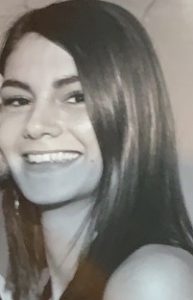 Markovic, Sofija
Markovic, Sofija
Undergraduate student
California Institute of Regenerative Medicine Intern
California State University San Marcos
San Diego, CA
At present I am an undergraduate student at Pamela Itkin-Ansari lab at Sanford Burnham Prebys. In our lab, the primary focus is understanding the disease of human pancreas. Studying signaling pathways controlling growth and differentiation in pancreas. My project for the year will be focusing on long non-coding RNAs and their role in pancreatic cancer. This research is significant because it could help discover optimal targets for drug discovery for pancreatic cancer. I believe that my current project will later apply to precision medicine. As every person is different, first we need to find the major solution for cancer. After which, we can individualize the treatment based on the lifestyle and environment the person is exposed to. Once done with undergraduate school, I am planning to attend graduate school where I plan on continuing research on cancer where I will individualizing solution to the disease.
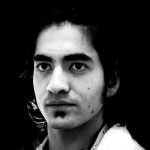 Marshall, Trevor
Marshall, Trevor
Undergraduate student
California Institute of Regenerative Medicine Intern
California State University San Marcos
San Diego, CA
CIRM Intern working with Gleeson Lab at UCSD actively learning the basics of stem cell research and hoping to be able to contribute to a method behind understanding the mechanisms causing epileptic seizures. I don't have a specific project at the moment but I have been shadowing a postdoc who is trying to isolate and amplify a 5 base pair repeat (TTTCA) that has been found in numerous patients with a special kind of epilepsy. Once they amplify the repeat they want to place the DNA into a vector, grow the vector in bacteria, and have a virus extract the DNA and transfer it into neuronal stem cells which we could then test on a MEA machine (multi electrode array) to see how it affects the neurons firing rates. I think this is absolutely fascinating and I am excited to learn more.
Melendez, Quantil, PhD
Post-doctoral fellow
Biomanufacturing Research Institute and Technology Enterprise (BRITE) program
North Carolina Central University
Durham, NC
Diabetes is a statistically verified health disparity in African American populations across the United States. 13.2 percent of African Americans, age 20 and above, have been clinically diagnosed with diabetes. The need for personalized therapy based on the diabetic health disparity in diverse populations has been validated through an abundance of recent publication. The mechanism to provide the precision therapy has not been fully elucidated. I am currently focused on validating an application of a novel diagnostic which will fulfill this need. I have been trained as a cardio-metabolic researcher for six years, investigating metabolic diseases on the genetic level. As a senior researcher and collegiate mentor at my home institution of North Carolina Central University I am given the freedom to develop translational technology that are of immediate clinical use and heavily requested.
Melikian, Garineh
Undergraduate student
Sanford Children's Health Research Center
Sanford Burnham Prebys Medical Discovery Institute
La Jolla, CA
I have always had a passion to learn about mechanisms that manage biological processes. Through a one-year internship awarded by the California Institute for Regenerative Medicine (CIRM), I have joined the Dong lab at the Sanford Burnham Prebys Medical Discovery Institute (La Jolla, CA). The lab specializes in development and cell regeneration. Since joining the lab, I have been actively engaged in exploring in vivo cell lineage conversion as a novel cell replacement-based therapy to treat degenerative diseases such as Diabetes. Diabetes is caused by beta-cell loss. Beta cells are responsible for sensing glucose levels and secreting insulin. The cutting-edge research being conducted in the lab, by reprogramming cells in vivo bypasses the need for surgeries and eliminates non-desired immune rejections, offers a new exciting approach. The goal is to ultimately replace beta-cells from non-related, abundant, non-vital cells and tissues within the patient’s body. During this upcoming year, I will expand my technical skillset using a wide variety of developmental, molecular and cellular biology techniques, as well as zebrafish and mouse physiology. Altogether, my training will allow me to prepare myself for my next career goal, getting into grad school.
 Nixon, Anna
Nixon, Anna
Graduate student
Biology
New York University
New York, NY
Currently my research aims to determine the mechanism of condensin spreading along the chromosome. This is important because condensin mutations are associated with cancers and other developmental diseases like muscular dystrophy and X-linked α-thalassemia/mental retardation syndrome (also known as ATR-X syndrome). Understanding how condensin spreads could determine where chromatin will package in the cell and could help predetermine or prevent these developmental diseases.
Chromatin packaging is essential to cells because it allows condensation and segregation of chromosomes and regulates transcription during interphase. Condensin proteins control chromatin packaging in the cell. In Caenorhabditis elegans, condensins are the main component of the dosage compensation complex (DCC), which binds to both of the X chromosomes in hermaphrodites and reduces their transcription by half to balance the proportion of X chromosomal gene expression in XX hermaphrodites to XO males. DCC binds to the X chromosomes in a two step manner involving X-specific recruitment then spreading. DCC is recruited to specific recruitment sites on the chromosome called rex sites and spreads along the chromosome. My current research examines how DCC spreads along the X chromosome to reach these rex sites because the spreading method of DCC is limited to the X. To investigate the linear spreading of DCC, I am developing sgRNA blocks on the X chromosome. This will prevent DCC spreading on one side of the block or both if DCC enters the chromosome on both sides of the recruitment site. To test this hypothesis, I will use sgRNAs to target the dCas9-GFP complex to the right of the last rex site, rex41, where there aren’t other proteins close by on the chromosome. If DCC accumulation occurs on either side of the block this helps support the theory that DCC enters everywhere on the chromosome, but if DCC accumulates on one side of the block this supports that DCC moves linearly along the chromosome to spread.
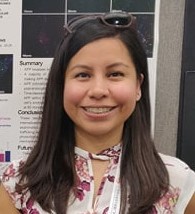 Olivarria, Gema
Olivarria, Gema
Graduate student
Interdepartmental Neuroscience
University of California Irvine
Irvine, CA
My name is Gema Olivarria, and I am currently a graduate student for the Interdepartmental Neuroscience Program at the University of California, Irvine. In the last year I've been working on research modeling neurodegenerative disease using human induced pluripotent stem cell (hiPSC) models. We use different mutations and genetic risk factors to model our diseases of interest, however the mutations chosen are derived largely from Eurocentric-genome populations. I am very interested in seeing how we can include genetic diversity in our research and work preemptively to minimize health disparities.
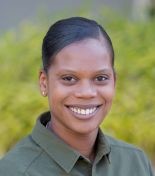 Samedy-Bates, Lesly Anne, PharmD, PhD, MS
Samedy-Bates, Lesly Anne, PharmD, PhD, MS
Post-doctoral fellow
Department of Bioengineering & Therapeutic Sciences
University of California San Francisco
San Francisco, CA
Currently there is a lack of diversity in genomic studies in general and pharmacogenomic studies in particular. Less than 5% of NIH-funded pulmonary disease research has included minority populations. As we begin to use genomic data to guide pharmacotherapy, we may find the inability to accurately predict drug response in underserved populations. In efforts to bridge the health disparities gap, my research focus includes the following: (1) Discovery genetics/genomics: Genome-wide approaches (genotyping and sequencing) to find DNA variants that are associated with immune-mediated traits, including disease susceptibility, response to therapy, and subclinical immune phenotypes; (2) Functional translation: Use of “humans as the model organism” to understand function and key biological pathways, with a long-term goal of disease prevention and drug discovery; we use genomic discoveries to guide high throughput, biomarker screens; and (3) Clinical translation: Use of clinical data linked with biospecimens to enable clinical translational research. My career objectives center on cultivating an intersection of my training in pulmonary diseases, educational foundation in pharmacogenomics, exposure in epidemiology and passion for urban health. It is vital to integrate novel biotechnology with pharmacological treatments in order to disseminate effective treatment to high-risk, vulnerable, and historically underserved populations. My “bench-to-beside” research has the ability to change patient care and potentially redefine suboptimal drug therapy, with the goal to make precision medicine available to all.
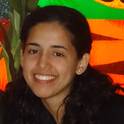 Santana, Genesys
Santana, Genesys
Graduate student (beginning fall 2019)
Genomics and Bioinformatics Cluster
University of Central Florida
Clermont, FL
Every human being is a capsule of history- a reflection of times past and future possibilities. My life’s quest to configure what makes us human spans from the humanities to genomics. To build on the knowledge gained from history I expanded my focus beyond archives constructed by empires to include an archive made by nature- genomes. I hope to add to the legacy of innovative scholars dedicated to excavating genomes and lived experiences for the root of current ills and solutions for a better future.
Studying the slave trade, I knew infectious diseases shape human societies and now want to understand host-pathogen interactions from a genomic perspective. At the UCF Genomics Cluster, I have facilitated numerous research projects that apply genomics to the study of infectious diseases. With guidance, I designed a research project that employs genomics to investigate sexual dysmorphic immunological responses to V. vulnificus infections. We investigate the effects of steroid sex hormones in the production of peroxiredoxins enzyme VvPrx3 by V. vulnificus, under in vitro conditions of nitric oxide within human macrophages. I am co-writing an R21 NIH grant to further fund the project.
Since January 2019, I have conducted a prospective cohort study under principal investigator Dr. Jennifer Liedel, at Nemours Children’s Hospital. In this metagenomics research project, we examine the microbiome in the breastmilk produced by mothers breastfeeding premature infants exhibiting symptoms of necrotizing enterocolitis. This will constitute my thesis project for the master’s program at Imperial College London.
 Saulsberry, Loren, PhD
Saulsberry, Loren, PhD
Assistant Professor
Department of Public Health Sciences
University of Chicago
Chicago, IL
I am pursuing a translational research agenda in precision medicine, and my research interests are at the intersection of genome sciences and health policy. My research aims to inform clinical and policy interventions that reduce health disparities for high risk and underserved populations through investigating: 1) the current use of emerging genomic technologies in clinical practice, 2) evaluating the impact of health policies relevant to genetic testing on access to care and health outcomes, and 3) patient views and experiences within the health system regarding the use of genetic testing as a guide for patient care. In prior studies, I have assessed patient experiences while managing chronic conditions within minority (traditionally underserved) as well as high need, high cost populations. A consistent theme in this work has been that these populations have not reaped equal benefits from recent technological advances in medicine, like genetic testing and its range of applications to improve health care. A variety of factors influence the inequitable dispersion of scientific technologies across groups of the U.S. population. By leveraging my skills in health services research, health policy, and the study of public opinion, my research will provide a better understanding of these factors and how the health system might devise strategies to overcome them.
Smithers, John
Undergraduate student
California Institute for Regenerative Medicine Intern
California State University San Marcos
San Diego, CA
I am currently an undergraduate intern seeking to go to medical school in the future. My current work as a new intern for Dr. Sandra Leibel will be related to stem cell treatments for neural and lung diseases. I hope to, at the very least, become a knowledgeable and valued asset for my internship lab.
 Thompson, Illanya
Thompson, Illanya
California Institute of Regenerative Medicine Intern
University of California San Diego
San Diego, CA
I am a California Institute of Regenerative Medicine Intern currently working at Dr. Kelly Frazer's lab at University of California San Diego. Currently, I have dual responsibilities at the Institute of Genomic medicine in the sequencing lab and in the cell culture lab. I intend to continue with my education after the CIRM internship while working in either an academic lab or an industry lab. At the internship, I am learning valuable skills in sequencing and cell culture. I have worked with the Qubit, MiSeq, HiSeq, BioRad qPCR machine, and TapeStation at the Institute for Genomic Medicine. In the cell culture lab, I have thawed and plated IPSCs, changed the media, and monitored the morphology changes daily. Sequencing DNA is related to precision medicine in that it is important to understand how specific variants react in the presence of a variety of pharmaceutical drugs and therapies.


